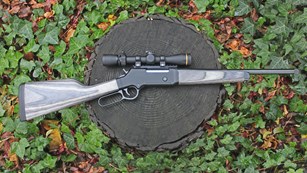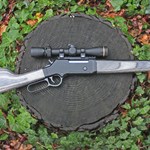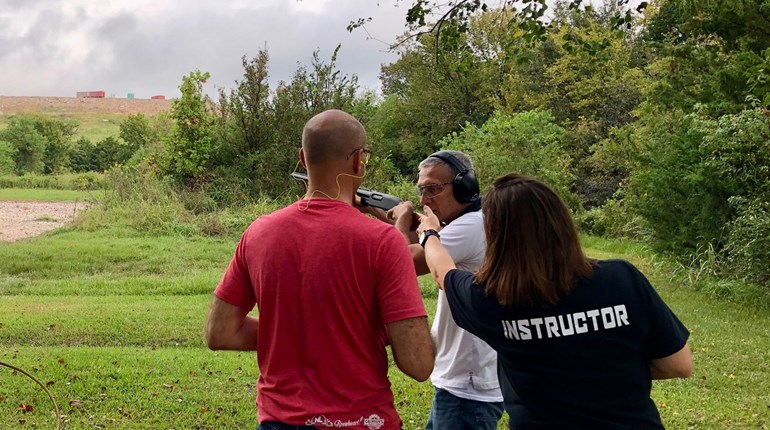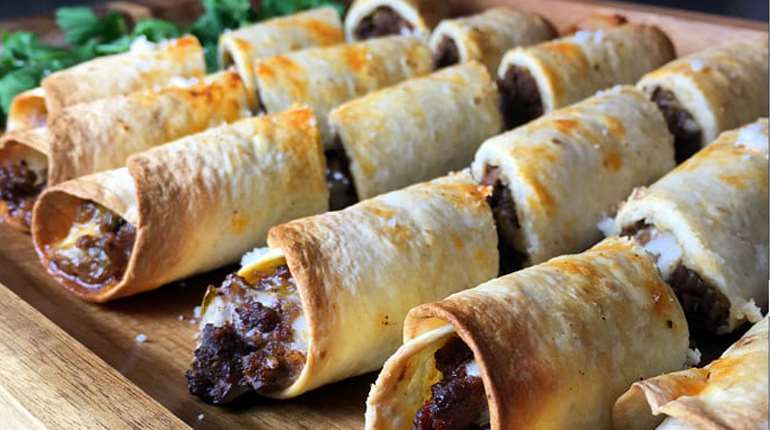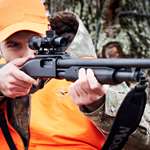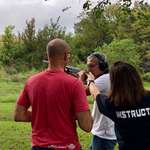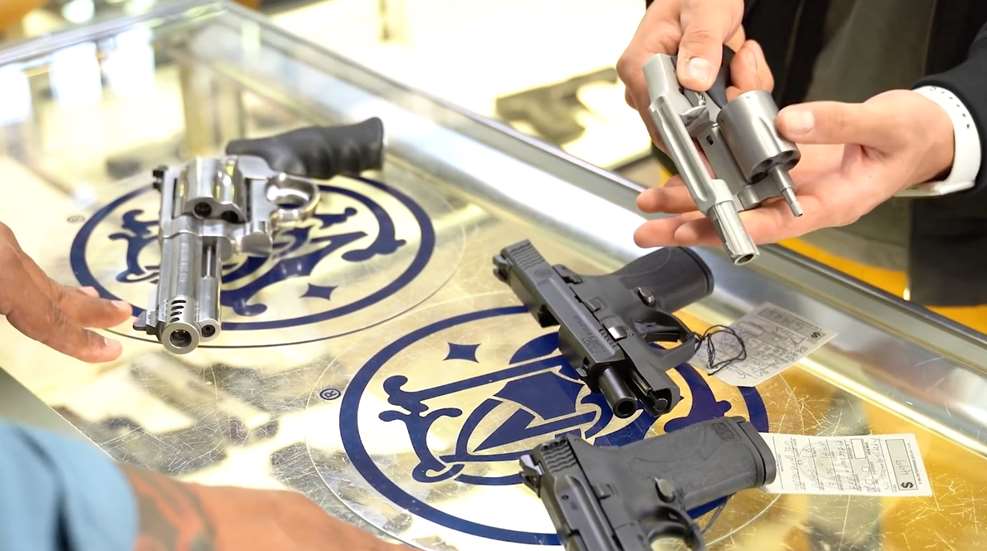
No matter which NRA firearm training course I am teaching—Pistol, Rifle or Shotgun—my students invariably ask the same question: “What is the best gun for a woman?” This typically sparks a vigorous debate among those in attendance, whether it’s women who are first-time gun owners, or men who are asking for their girlfriends, wives or daughters.
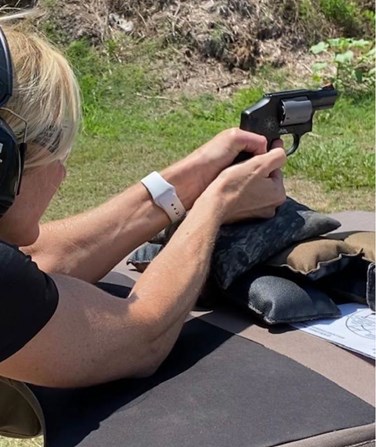
It seems everyone has an opinion on this common question, usually recommending a specific manufacturer or caliber, or the non-committal, “It depends.” Ultimately the solution to this dilemma is also the same: Go out and try different guns to see what you like. Unfortunately, these answers and suggestions do little to help new gun owners to find the right gun for personal protection.
Here’s an idea. Instead of telling a new woman gun owner what to do, we should be asking her what she wants to do. Does she want to conceal carry or does her state offer open carry as an option? If she chooses to carry, how does she plan to carry—in a purse or on her body? Will this gun be for her vehicle, home or all of the above? Without knowing the answer, any advice is uninformed advice.
I see it almost every day. A first-time gun owner takes the initiative to take a concealed-carry course, seeks the advice of long-time gun owners, buys the suggested firearm, then leaves it at home without ever going to the range to fire the newly purchased firearm. Seldom do I find a new gun owner being mentored by the person or persons advising them on that “perfect” firearm. The very least these “experts” could do is accompany these new gun owners to the range for their first time.
No Gun? No Good
Too often, gun owners want a range gun or target gun that doubles as a personal-protection gun. This frequently results in a situation in which people who purchased a personal protection gun with the intent to carry are walking around without it. The reason usually cited for its absence is that the firearm is either too heavy or too hard to conceal, and they’ve left it in their vehicle or in the nightstand at home. There is only one correct answer when it comes to firearms for personal protection: It is better to have a firearm and not need it then to need a firearm and not have it!

Likely these new gun owners were given bad advice and chose a gun more suited for competition, target shooting or even those designed for law enforcement. Often those “experts” the new gun owner has sought out for advice are more enamored with the newest rave in the gun world, or they have convinced themselves that their choice of firearms is the only option. Sometimes they are stuck in the present and have not looked at options that have provided people with effective personal protection for a century. Multipurpose firearms or those that have the highest ammunition capacity are not necessarily the best option for personal protection. The best firearm for personal protection is the firearm that is at hand when it is needed for self-defense, which might mean something small and light.
Let’s look at a real-life application. When a woman is assaulted, it is usually a fast, unexpected, close attack. As a result, a woman needs a firearm that can respond equally: a quick draw; unexpected by the criminal; and can actually be deployed upon extremely close contact.
Being able to properly deploy a full-sized revolver, as well as many compact semi-automatics, requires creating distance between attacker and victim. Distance makes it possible to achieve a proper pistol hold and decreases the chance of a stoppage (any unintentional interruption in the cycle of operation). Distance is also important because many semi-autos can be taken “out of battery” (when the slide, bolt or action is not in the normal firing position) simply by contacting the muzzle of the pistol to the body of an assailant. Remember, a woman under attack is typically being held tightly or fighting to get the attacker off her.
This is where thinking small, light and simple comes in. The firearms I am speaking of used to be referred to as pocket guns, vest guns or “hides.” These firearms are defensive, and used for no other reason than to save your life. An attacker cannot disarm you if they do not know you are armed.
Here’s a look at some of today's “outside the box” categories women might consider when selecting a personal protection pistol:
.22 Caliber Firearms 
The .22 caliber firearm is probably the most overlooked firearm for personal protection. States such as Texas now allow .22 caliber handguns to be carried concealed. Although growing in popularity, the .22 caliber still sparks much debate about the effectiveness of it as a good choice for personal protection. Once again, having something is better than nothing. Just remember, a .22 is more powerful—if it is readily available and used to stop an attacker—than the .44 magnum stored back at home in the nightstand!
Derringers 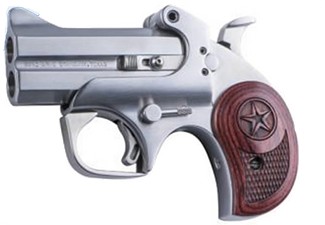
Derringers have been around since the advent of concealed carry. Usually a two-shot gun, this small and easily concealed firearm is ideal for close deployment. I was told by an undercover Texas State Peace Officer that he always kept a derringer in his pocket, just in case he had to get someone off him. If they ended up on top of him or if he was ever disarmed, he always carried a “hide” that was not seen.
Snub-Nosed Revolvers
For decades, snub-nosed revolvers were standard for undercover detectives. Usually a five-shot firearm, they are easily concealed and reliable. They are great for close deployment and can be fired from any position. These firearms seldom malfunction and can be fired with the muzzle pressed right up against an attacker. Snub-nosed revolvers can either be hammerless or have exposed hammers. The hammerless revolvers were once referred to as “Lady Guns.” The hammerless versions are great for carrying in a purse or pocket, or worn under outer garments, because there is no hammer to hang up on straps or clothing.
Lightweight Options 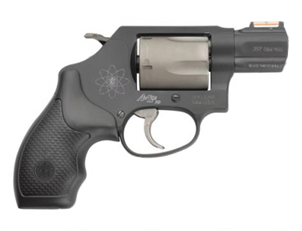
Fortunately, today’s gun owners have numerous lightweight options for concealed carry from which to choose. Several firearms manufacturers produce lightweight models that are a fraction of the weight of their traditional all-steel counterparts. Smith & Wesson went a step further, producing an Air Lite model that features a Scandium alloy frame and Titanium alloy cylinder, and weighs only 11.7 ozs. These lightweight options make it possible to carry firearms that are very easily concealed and have relatively good stopping power.
Made for Carrying, Not Shooting
The concept that certain firearms are made for carrying and not necessarily for everyday shooting seems to contradict the admonition to “practice and practice often” with the firearm you carry. This does not mean the NRA Pistol Shooting Fundamentals should not be followed.
To be clear, every new firearm owner should take an NRA Basics of Pistol Shooting class. This course teaches that once the NRA Pistol Shooting Fundamentals are learned, they can be implemented on any firearm. You should practice with and get the feel of your lightweight carry firearm. Remember, these firearms are designed to be used at the 3-yard or closer range in which assaults usually take place.
At the range, fine tune your shooting skills with heavier, “traditional” firearms, and take practice shots with your lightweight personal protection firearm. Following NRA Basics of Pistol Training, use dummy rounds, practice drawing from concealment, dry fire, and reload your firearm. These exercises don't have to be done exclusively at the gun range, in fact, many techniques to enhance firearm skills and build “muscle memory” can be done in the comfort of your own home, using dummy rounds to practice these essentials.
What About Recoil?
Recoil is often the first reason cited when rejecting the idea of carrying a lightweight defensive gun as a tool to stop an assault. The response is very simple: There is no recoil in lightweight guns when they are used as designed!
Let me explain. I have participated close to a hundred youth hunts in my 25 years of mentoring young hunters. The vast majority of these hunts involve first-time hunters. Almost every time a new hunter gets set up, the look on their face expresses concern over the recoil of the firearm. After the deer emerges and the excitement takes over and the shot is taken, the same thing occurs each time. I asked the new hunter if they felt the recoil and the response is always the same: “What recoil?”
Excitement, adrenaline and even fear are great mitigating factors when dealing with recoil. You do not have to believe me; just ask someone who had to use a firearm in defense of themselves or a loved one.
Just Carry
Ultimately, keep in mind that I am not advocating carrying any particular firearm for personal self-defense. What I am advocating for is when choosing a firearm for yourself, or if you are mentoring others on personal self-defense firearms, think outside the box and keep an open mind to all options to this very personal decision.
Small and lightweight firearms have a proven track record as highly effective personal self-defense guns. New gun owners are more apt to actually carry one of these firearms, so they are easily accessible if ever needed. Second, lightweight firearms are easy to use and easy to draw in close quarters. Third, they are designed to be used at point-blank range, where most assaults take place. Lastly, they are ideal for the last line of defense when all other efforts fail to neutralize a life-threatening situation.










